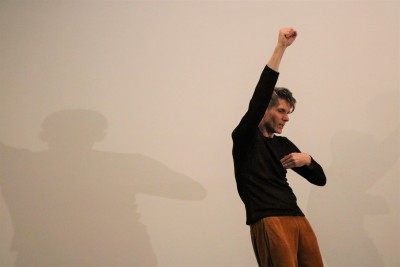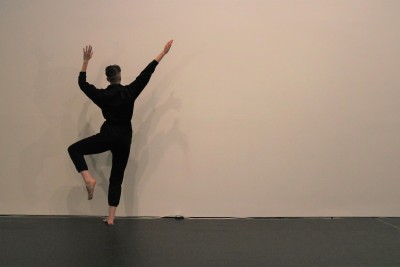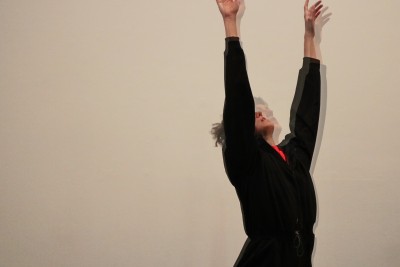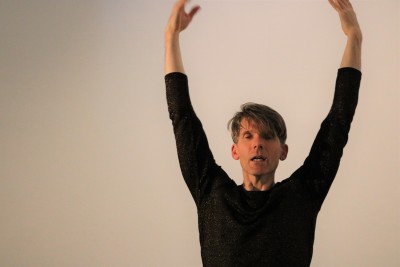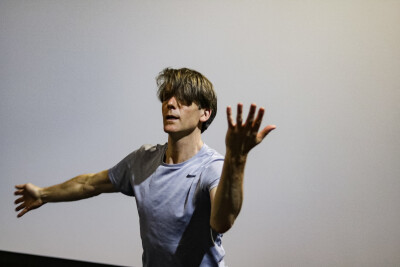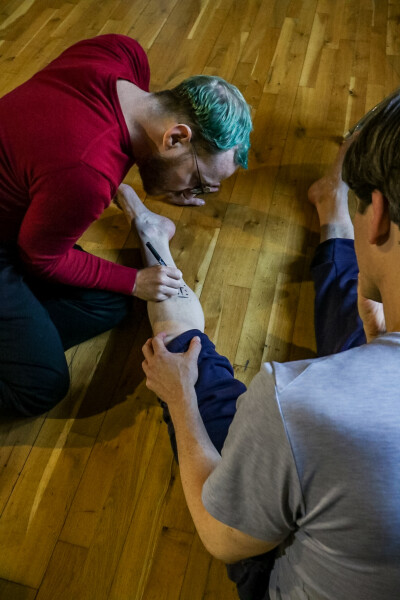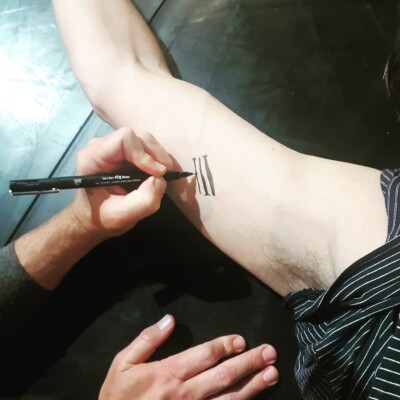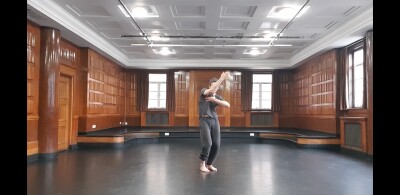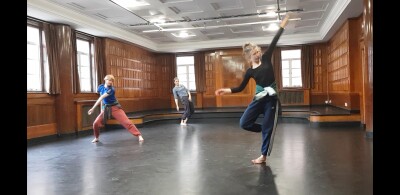What I assembled was an evening of dance made from the different elements I’ve been working on this past couple of years: For Tove, the solo that has evolved through a number of screen and streamed versions for this first live performance; the Déambulations audio piece from the Walthamstow Wetlands; Unreeling, the solo I performed at Tipperary Dance Platform and finally For Isabella, a solo I’ve created with and for Isabella Oberlander via Zoom that draws on the Wetlands as sanctuary. I trusted that these pieces, still fresh, still with potential to develop further could work as companion pieces for the evening. I liked that they had aspects that drew from my own experience but that the evening ends up with Isabella who transforms my experience through her own.
We performed in the gallery space in Uilinn, a space with a concrete floor that I really shouldn’t dance on, and a generous height that is a pleasure to be in. The audience was limited due to pandemic restrictions but felt warm and supportive. It included family, dance colleagues and friends as well as other artists from the area. I tried to create a relaxed atmosphere by encouraging conversation between the audience members. And so when it came to a short exchange at the end of the evening, it was rewarding to hear what people had connected with. Some mentioned calmness after a difficult day, some memories of London through the audio piece, another a memory of their father in the middle-skin of my bare torso (she didn’t call it middle-aged but she did mention the particular quality of skin that my body now has and that I couldn’t have evoked when I was younger. There are connections this older body can make that younger ones can’t. And vice versa.)
As with TDP, I was energised by performing and by the realisation that sharing the work with others does do something more that the pleasure of dancing alone can offer me. It has an intensity that teaches differently and the work is clearer (and by work I mean the choreography and what I’m trying to achieve by dancing) when it’s undertaken in relation to audience.
I come away from the experience grateful to have been able to dance, to dance for an audience, to be in a team with Isabella and with Jared who looked after the sound. I wonder about how to develop this work: the same challenges exist in terms of resourcing the collaboration of others. But I trust the material and will wait to see where it can grow next.

